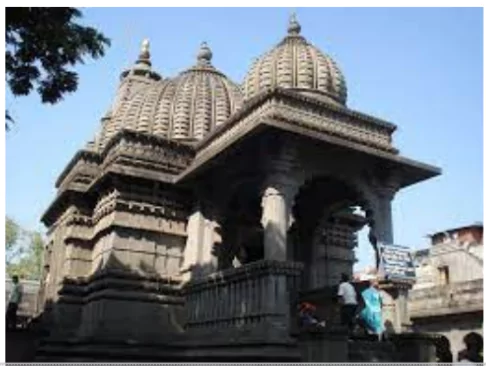Context:
Recently, the Prime Minister visited the Kalaram Mandir of Nashik, Maharshtra.
Kalaram Mandir: The Spiritual Marvels of a Black Ram’s Abode

- The Kalaram Mandir derives its name from a black statue of the Lord — Kala Ram translates literally to “Black Ram”.
- Built: Kalaram Mandir was built in 1792 by Sardar Rangarao Odheka.
- Location: Kalaram Mandir is situated on the banks of Godavari in the Panchavati area of the city.
- Features: 14 Steps, 84 Pillars, and Divine Footprints
- The main temple has 14 steps, representing the 14 years of Ram’s exile.
- The 84 pillars in the temples represent the cycle of 84 lakh species that one has to complete to be born as a human.
- A very old tree, with an impression of Lord Dattatreya’s footprints on the stone beneath it.
Kalaram Mandir: Bridging Faith & Social Justice in India’s History
- India’s Dalit Movement Connection: As per an account of the Satyagraha for Temple Entry in Dhananjay Keer’s book, Dr Ambedkar: Life and Mission.
- Dr BR Ambedkar and social activist Pandurang Sadashiv Sane, led a satyagraha at the Kalaram temple on March 3, 1930, demanding entry for Dalits into the sacred space.
- This movement aimed to challenge the oppressive caste norms prevalent during the time.
- During the satyagraha, Ambedkar and his 15,000 Dalit followers peacefully picketed the temple.
- The Ramayana Link: The Region of Panchavati is where Shri Ram, along with Sita and Lakshman, spent the first few years of their 14-year exile, and the abduction of Mata Sita by demon King Ravana set off the Ramayana war.
News Source: The Indian Express
![]() 13 Jan 2024
13 Jan 2024

